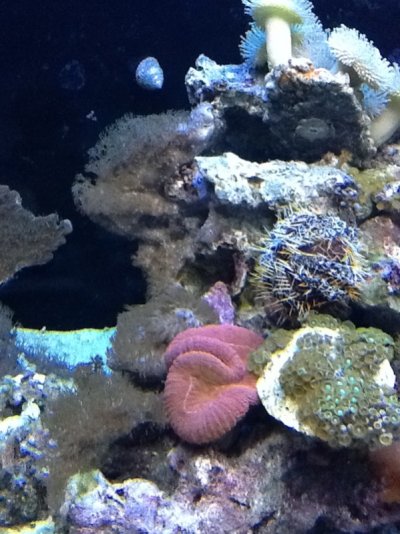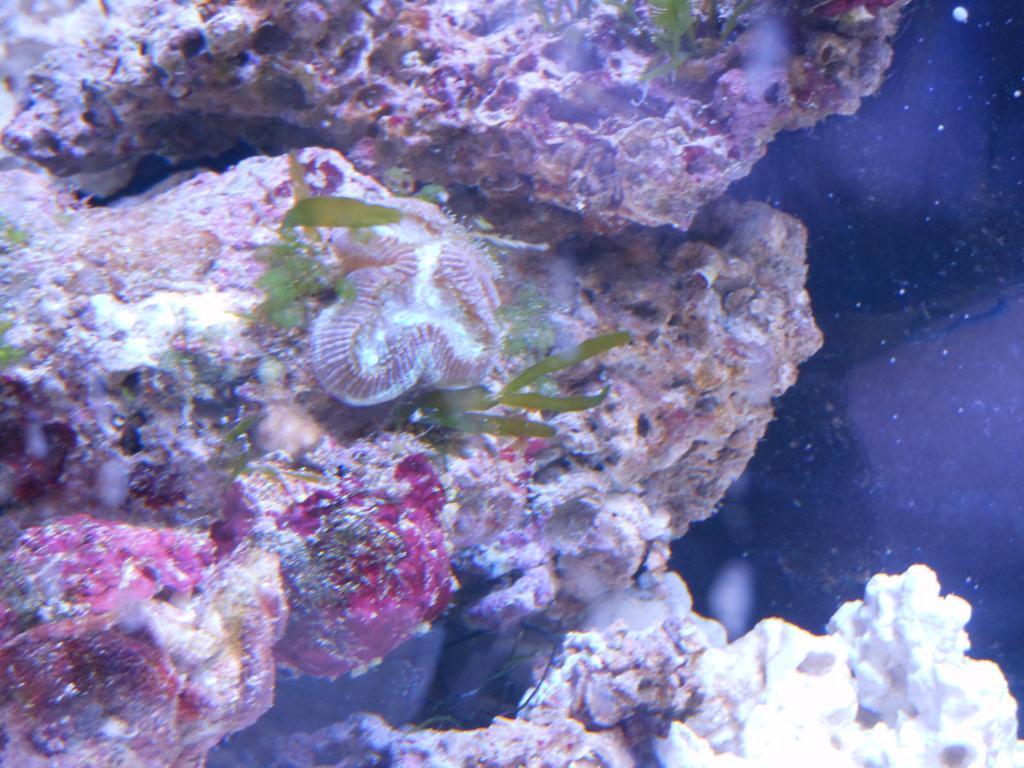You are using an out of date browser. It may not display this or other websites correctly.
You should upgrade or use an alternative browser.
You should upgrade or use an alternative browser.
This coral is covering everything
- Thread starter FlopNewsom
- Start date
The friendliest place on the web for anyone with an interest in aquariums or fish keeping!
If you have answers, please help by responding to the unanswered posts.
If you have answers, please help by responding to the unanswered posts.
KrempelJD
Aquarium Advice Regular
- Joined
- Oct 26, 2011
- Messages
- 55
Pulsing xenia? It seems to spread fast
Sniperhank
Giant Clam Addict
It is definitely xenia. Very fast growing soft coral. To remove it, I would remove the rock and scrub it with a scrub brush or just boil the whole rock to kill everything on it.
If that's Xenia then it's the tiniest Xenia I've ever seen. I'm not sure what it is I can't make out the structure of the polyps. It looks like it forms a mat between them from what I can make out as well. Xenia looks kind of like stalks of cauliflower that have bloomed.
Sniperhank
Giant Clam Addict
Star polyps maybe.
FlopNewsom
Aquarium Advice Freak
It IS like a mat. When the light is off it looks like a plastic covering. When the lights come on, it has feathery polyps.
think he's talking about the pink lobo
Saltwater Aquarium Corals for Marine Reef Aquariums: Brain Coral, Lobophyllia
straight razor to cut it off as close to rock as you can to remove
Saltwater Aquarium Corals for Marine Reef Aquariums: Brain Coral, Lobophyllia
straight razor to cut it off as close to rock as you can to remove
We should be so lucky to have lobo running amuck and trying to take over the tank.
If it retracts to a leathery mat at night or when you disturb it then you are dealing with some type of star polyp. There are many kinds, and the color can be pretty variable. They can be the devil to get rid of because when you try to pull the mat off the rocks tiny pieces break up and float around your tank to spring up elsewhere. That's probably what happened in the first place.
If it retracts to a leathery mat at night or when you disturb it then you are dealing with some type of star polyp. There are many kinds, and the color can be pretty variable. They can be the devil to get rid of because when you try to pull the mat off the rocks tiny pieces break up and float around your tank to spring up elsewhere. That's probably what happened in the first place.
FlopNewsom
Aquarium Advice Freak
We should be so lucky to have lobo running amuck and trying to take over the tank.
If it retracts to a leathery mat at night or when you disturb it then you are dealing with some type of star polyp. There are many kinds, and the color can be pretty variable. They can be the devil to get rid of because when you try to pull the mat off the rocks tiny pieces break up and float around your tank to spring up elsewhere. That's probably what happened in the first place.
Well that's what it is then. It will grow and cover anything in its path. Some rocks it is on are isolated but one of my main display rocks has it and I've got to get it off before it covers and kills everything in my tank.
mr_X
Aquarium Advice Addict
I think the mat is star polyps. They do grow fast and cover other corals, but they do come in brown, as shown. Not as nice as the green variation. You can slip something flat, like a butter knife or something under the mat and peel it off gently.
czwicky
Aquarium Advice Freak
- Joined
- Oct 2, 2012
- Messages
- 273
They are encrusting gorgonians. Notice the longer stem with short, flowwery tentacles on the polyps. GSP do not have flowery/lacy tentacles
Depending on what reference you look at Briareum spp. are called star polyps, encrusting gorgonians or a number of other things. Encrusting gorgonian can also refer to Erythropodium spp., but the difference would be hard to see in that photo. It would be easier to tell with the polyps retracted.
I am used to using the star polyps name, and had never heard encrusting gorgonian until you mentioned it, even though they refer to the same animal. I was not referring to GSP. It is clearly not a GSP. Much to flowy and flowery for that.
I am used to using the star polyps name, and had never heard encrusting gorgonian until you mentioned it, even though they refer to the same animal. I was not referring to GSP. It is clearly not a GSP. Much to flowy and flowery for that.
mr_X
Aquarium Advice Addict
...star polyps ARE encrusting gorgonians.They are encrusting gorgonians. Notice the longer stem with short, flowwery tentacles on the polyps. GSP do not have flowery/lacy tentacles
FlopNewsom
Aquarium Advice Freak
I kind of thought star polyp but wasn't sure and didn't hear of anyone else on here complaining about it. I guess that will be my weekend project. Luckily there is not much other coral attached to that rock.
mr_X
Aquarium Advice Addict
It may not be, as I didn't notice that the polyps looked feathery. A very close relative to star polyps, judging by the mat and growth pattern. Either way, I would say it can be removed/controlled the same way as you would the other star polyps.
Similar threads
- Replies
- 2
- Views
- 498
- Replies
- 4
- Views
- 643
- Replies
- 5
- Views
- 511
- Replies
- 5
- Views
- 655


